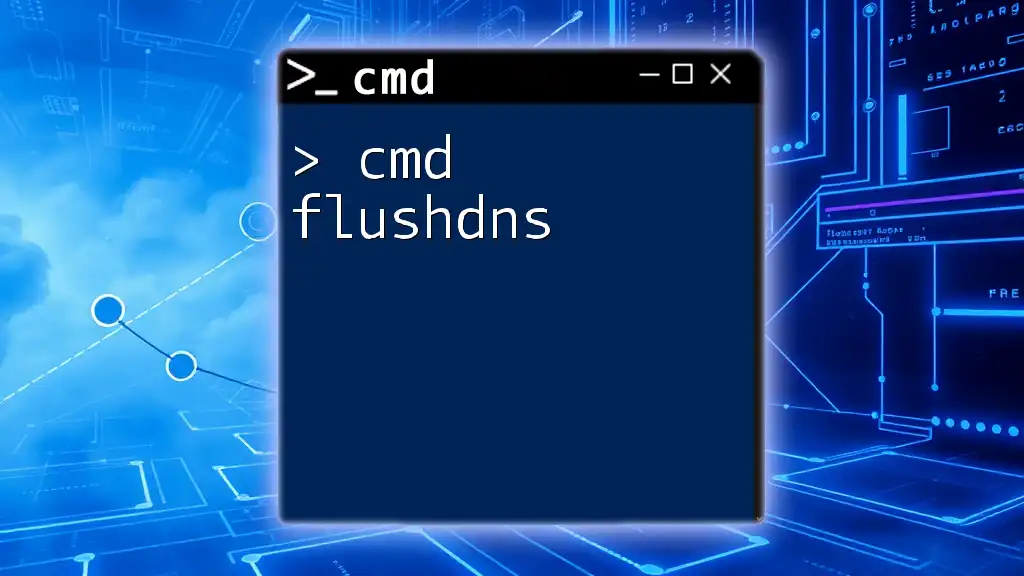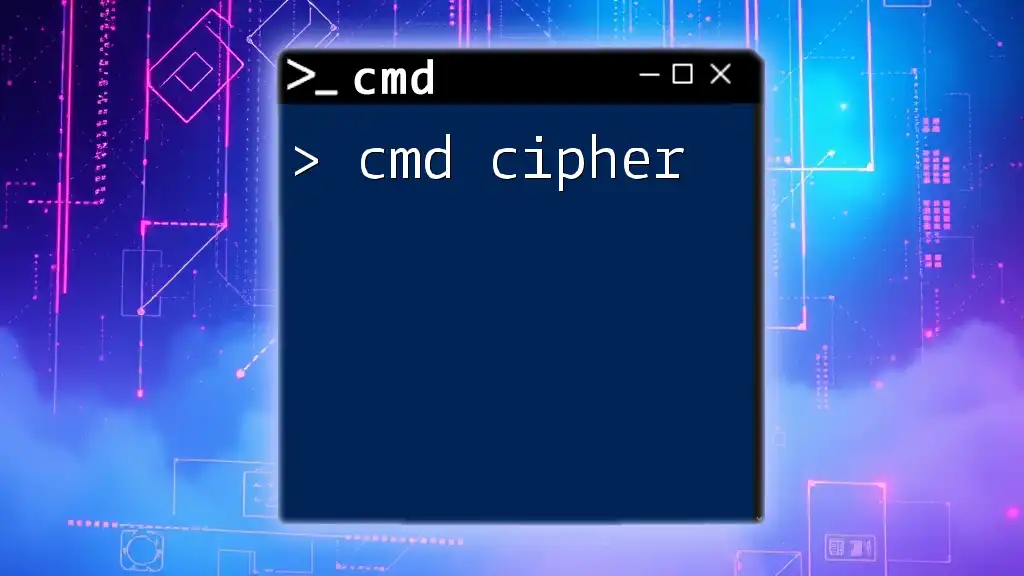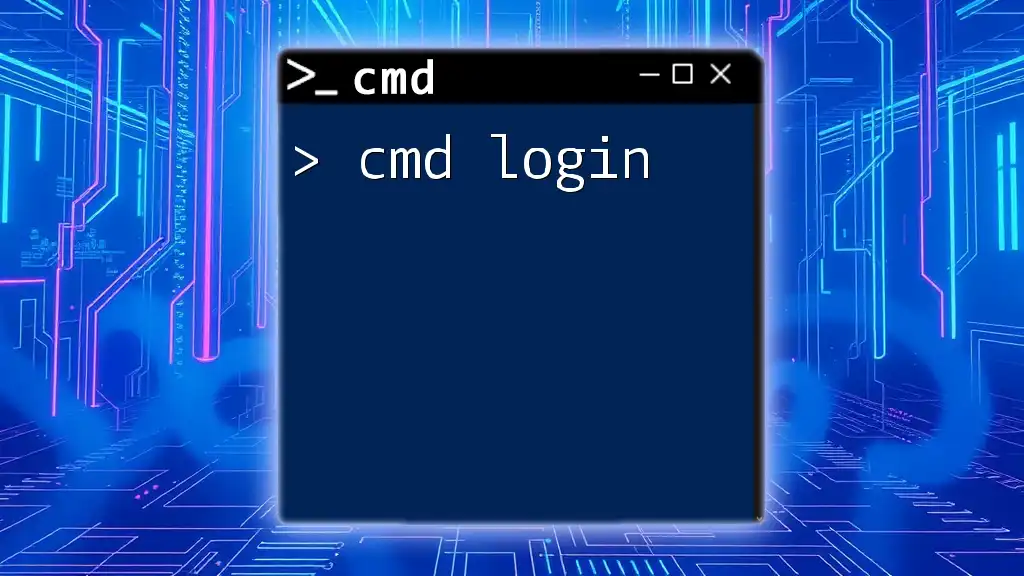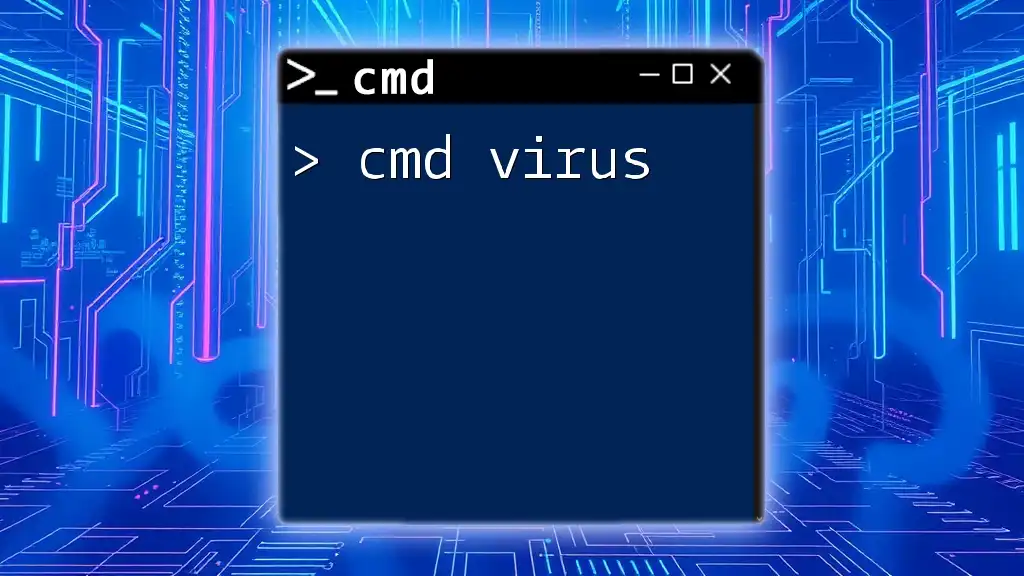The `curl` command in CMD is a tool used to transfer data from or to a server using various protocols, commonly HTTP or HTTPS.
Here's a basic example of a `curl` command to fetch the content of a webpage:
curl https://www.example.com
What is Curl?
Curl is a powerful command-line tool used to transfer data from or to a server utilizing various protocols, such as HTTP, HTTPS, FTP, and more. It allows users to interact with web servers and APIs, making it invaluable for developers, system administrators, and anyone needing to make web requests or retrieve data. Since its inception, Curl has evolved dramatically, becoming a standard for users needing a versatile, reliable data transfer tool.
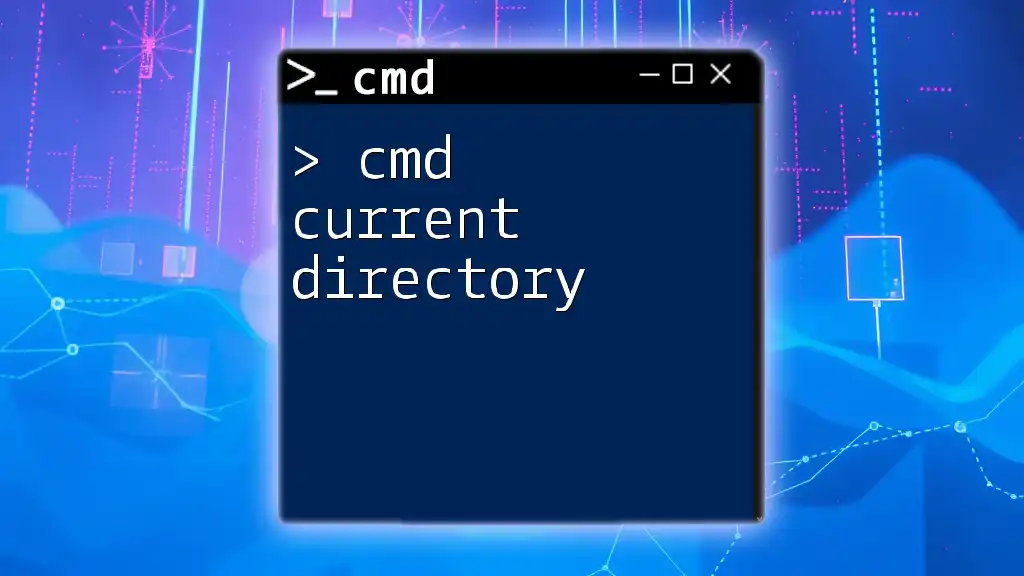
Importance of CMD Curl in Windows
In a Windows environment, CMD Curl is essential for various tasks, including troubleshooting network issues, automating API requests, and downloading files directly from the command line. By utilizing Curl, Windows users can leverage functionalities typically reserved for more advanced environments. Moreover, learning to use CMD Curl significantly enhances one’s ability to engage with both local and remote servers efficiently.

Getting Started with CMD Curl
Setting Up Curl on Windows CMD
To begin using Curl in Windows, it’s crucial first to check if it's installed. You can do this by typing:
curl --version
If Curl is installed, this command will output the version number and supported protocols. If you don’t have Curl installed, you'll need to download it from the official Curl website and follow the installation instructions to integrate it into your command line environment.
Basic Syntax of Curl
Understanding the basic syntax of Curl is critical for using it effectively. The general structure is:
curl [options] [URL]
- options: These are flags that modify the behavior of Curl.
- URL: This specifies the web address of the resource you want to access.
Mastering this syntax is the first step toward becoming proficient with CMD Curl.

Common CMD Curl Commands
Fetching a Web Page
One of the simplest yet most useful commands in Curl is fetching a webpage. To retrieve the content of a webpage, use:
curl http://example.com
This command sends a GET request to the specified URL, and the HTML content of the page will be displayed directly in the command line interface.
Saving Output to a File
In many cases, you might want to save the output of a Curl command to a file instead of displaying it on the screen. To do this, use the `-o` option:
curl -o filename.html http://example.com
This command will save the retrieved content as `filename.html` in your current directory, allowing you to view the page later offline.
Displaying Headers Only
Understanding HTTP headers can provide insight into web server responses. To fetch only the headers for a specific page, you can use the `-I` option as follows:
curl -I http://example.com
This command sends a HEAD request, which retrieves the headers without downloading the entire content of the page, which is especially useful for debugging or when checking server configurations.

Advanced CMD Curl Features
Sending Data with POST Requests
Curl allows you to send data to a server using various HTTP methods. One common method is POST, which is typically used for form submissions. You can structure the command like this:
curl -X POST -d "param1=value1¶m2=value2" http://example.com/submit
In this example, `param1` and `param2` are key-value pairs being sent to the server. Using POST requests is essential for interacting with APIs, where you often need to send data.
Adding Authentication
Many web services require authentication before granting access to resources. Curl simplifies this using the `-u` option for Basic Authentication:
curl -u username:password http://example.com
Replace `username` and `password` with your actual credentials. While this method is straightforward, it’s crucial to be cautious with how you handle sensitive information to ensure your credentials remain secure.
Handling Cookies
Cookies are commonly used for session management in web applications. To send cookies with your request, you can use the `-b` option:
curl -b cookies.txt http://example.com
This command reads cookies from a file named `cookies.txt` and sends them along with the request. Managing cookies effectively can be vital for interacting with personalized web experiences or for maintaining session states across requests.

Troubleshooting with CMD Curl
Common Error Messages
When using Curl, you may encounter various error messages. Understanding these can help troubleshoot issues effectively:
- Could not resolve host: This indicates an issue with the DNS, where Curl cannot translate the hostname to an IP address.
- Connection refused: This suggests that the server is not accepting requests on the specified port.
- HTTP/1.1 404 Not Found: This indicates that the requested resource could not be found on the server.
Using Verbose Mode for Debugging
To gain deeper insights into what Curl is doing, you can use the `-v` option for verbose output:
curl -v http://example.com
This detailed output includes information about the request and response headers, making it easier to identify where issues may arise.
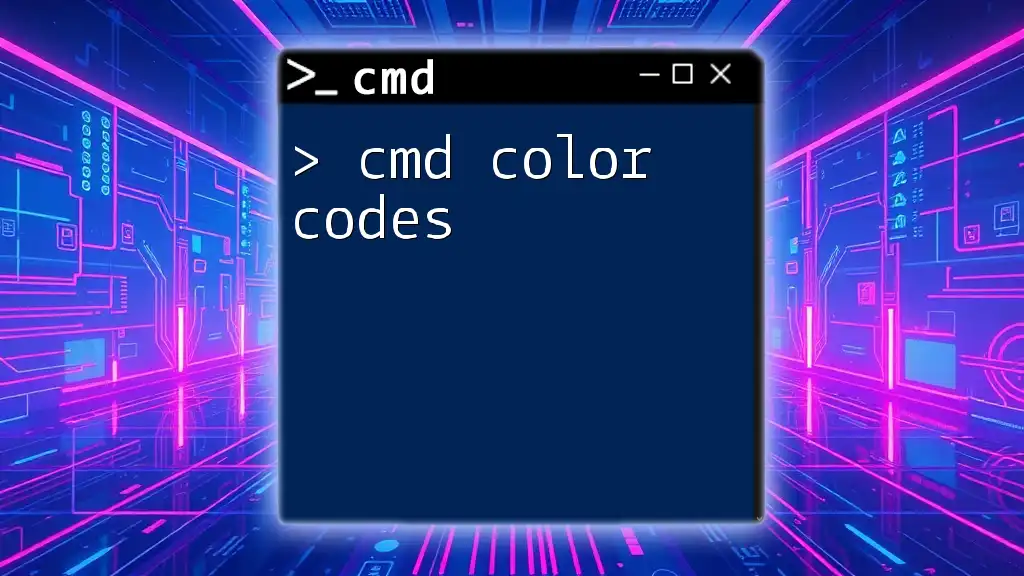
Integrating CMD Curl into Scripts
Curl in Batch Files
Curl can be incorporated into batch files, automating routine tasks. For instance, a simple batch script to download a list of files could look like this:
@echo off
curl -O http://example.com/file1.txt
curl -O http://example.com/file2.txt
This example will download `file1.txt` and `file2.txt` into the current directory. Using scripts can save time and ensure consistency in tasks.
Automating API Requests
Curl is exceptionally useful for automating requests to APIs. For example, to send a GET request to an API endpoint, you might write:
curl -H "API-Key: your_api_key" http://api.example.com/data
In this command, you’re including an API key in the headers to authenticate your request. Automating API interactions through Curl scripts can streamline workflows and minimize manual input.
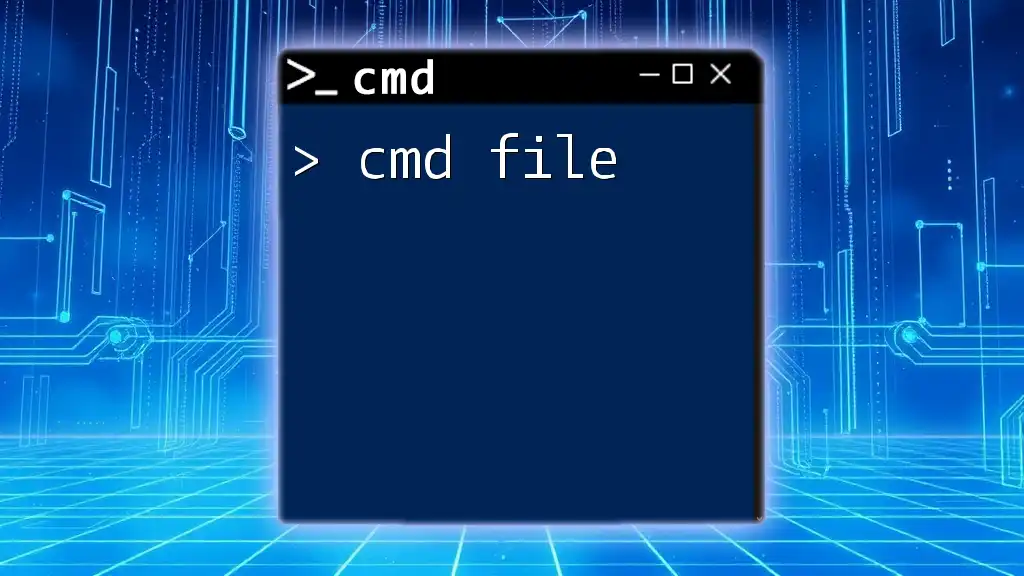
Best Practices for Using CMD Curl
Security Considerations
When using CMD Curl, always prioritize security. This is especially true when dealing with sensitive data. Ensure that you use HTTPS URLs to maintain secure connections, as this encrypts any data transmitted between your machine and the server.
Conclusion
CMD Curl is an invaluable tool that can simplify countless tasks, from fetching web pages to sending data to APIs. By mastering its commands and options, users can handle various networking needs efficiently. As you explore the capabilities of CMD Curl, you’ll discover new ways to streamline processes and enhance your command-line skills.

Additional Resources
To further your understanding of CMD Curl, consider checking out the following resources:
- The official Curl documentation provides comprehensive details on all commands and options.
- Online forums and communities can provide assistance and shared experiences from other Curl users.
- Look for books or online courses focused on command-line tools for deeper learning and best practices.
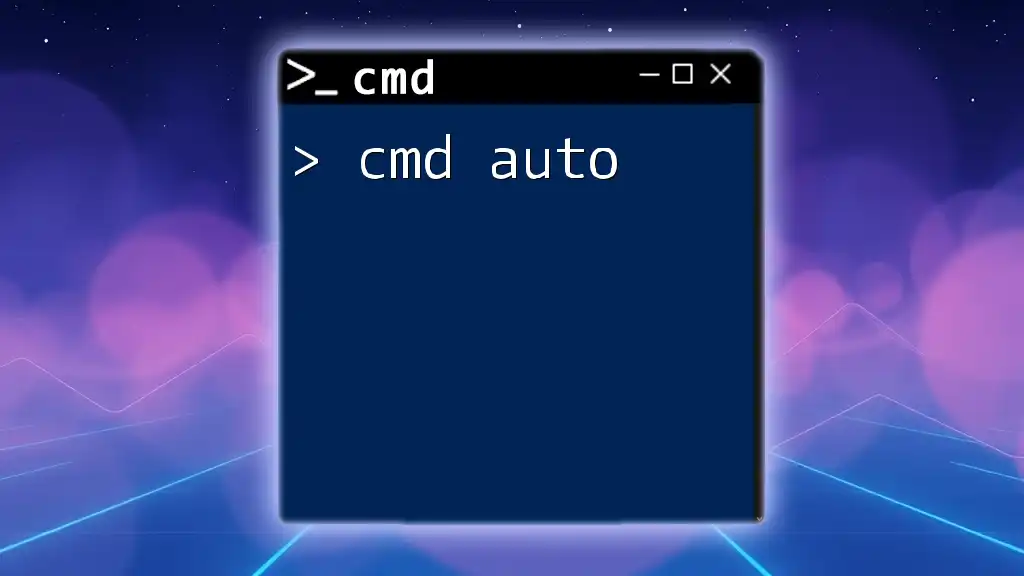
FAQs about CMD Curl
What is the difference between Curl and Wget?
Both Curl and Wget serve similar purposes in downloading content, but Curl is more versatile, handling a broader range of protocols and options, especially when it comes to sending data and interacting with APIs. Moreover, Curl has a more complex syntax that allows for detailed interactions, while Wget is more straightforward for basic downloads.
Can Curl be used for Windows PowerShell?
Yes, while Curl primarily operates in CMD, many commands for Curl can be adapted for use in Windows PowerShell as well. However, some syntax may differ, and it is crucial to consult relevant documentation to understand these differences.
Using CMD Curl effectively can greatly improve your efficiency and capability in managing web requests and operations within Windows environments.







